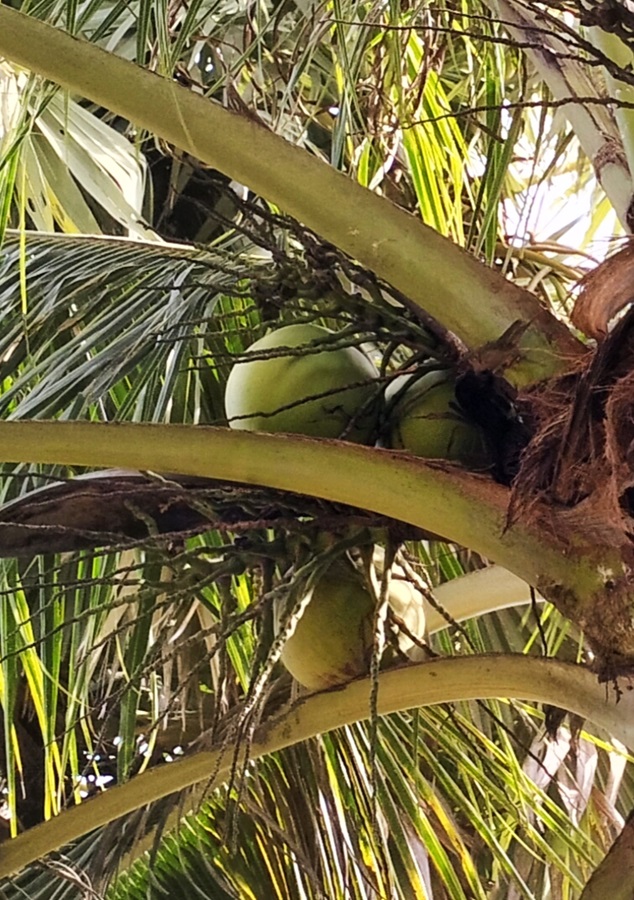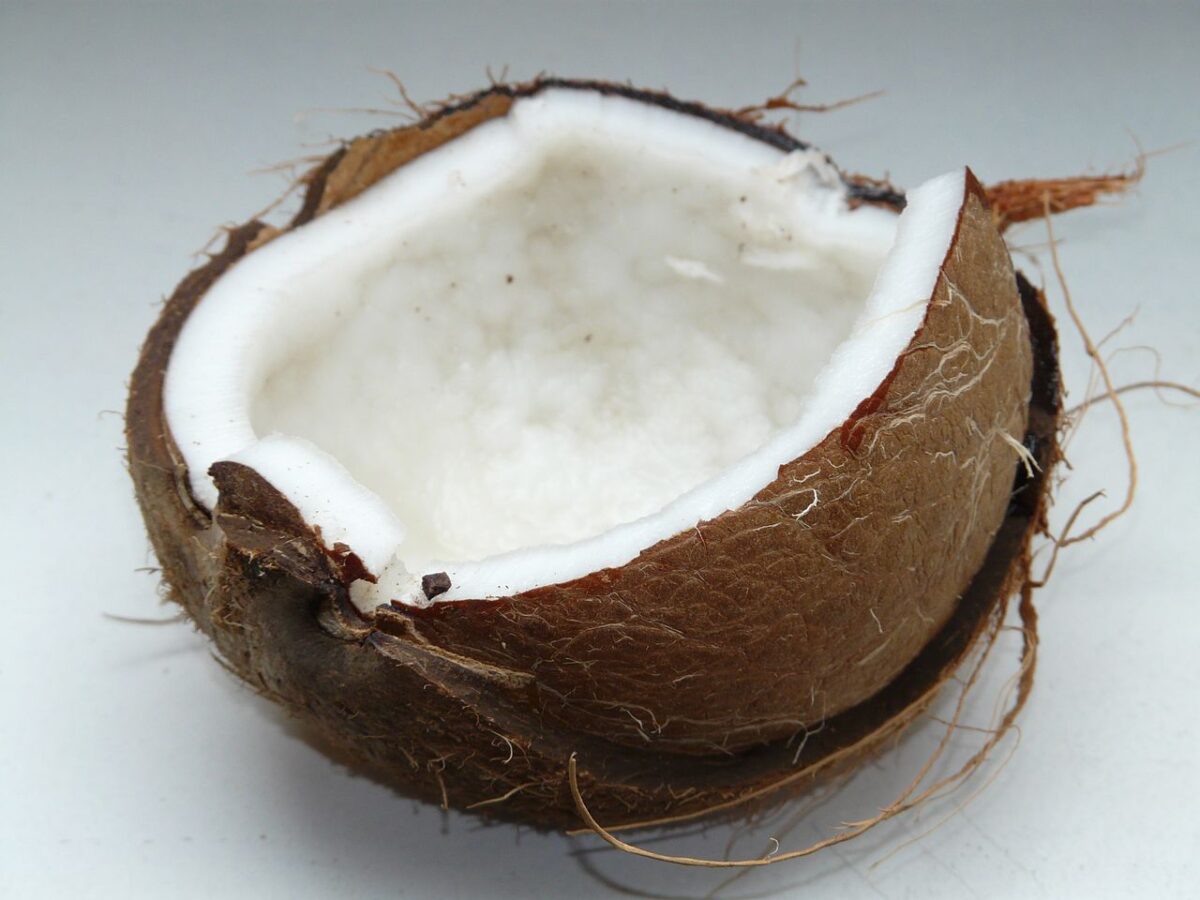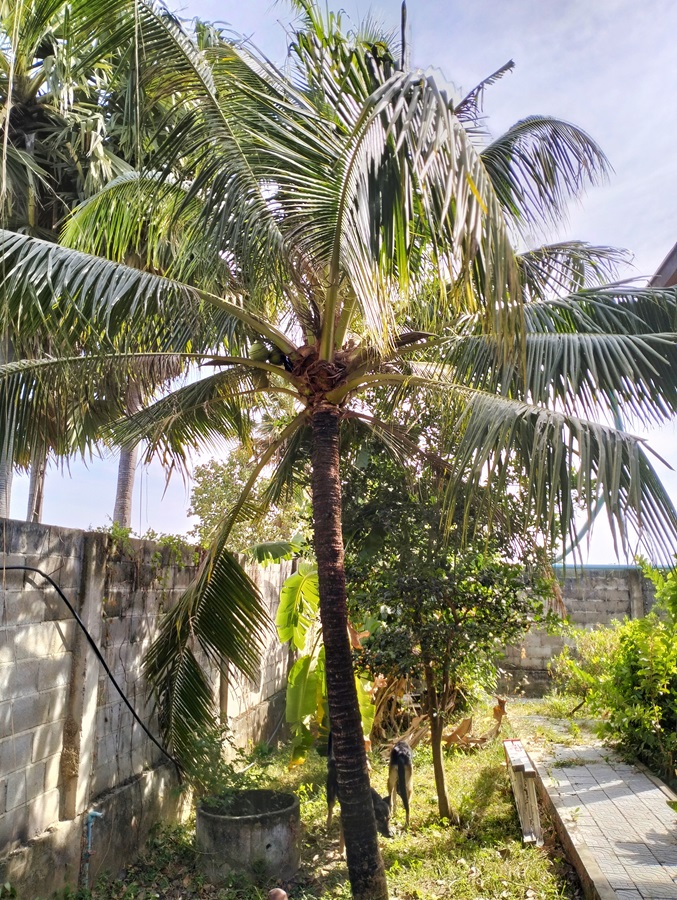
Nuts for Coconuts
If famous products help define Thailand to the world, like silk and rice, then the country’s coconuts have a strong case to be included on the list.
Coconuts here are renowned for their many positive attributes. They include:
- Having many health benefits
- Being used for beauty treatments
- Bring a strong part of Thailand’s diverse culture
- Contributes to Thailand’s tourism
- Can be used as a food, drink, or dessert
Thailand’s coconuts are renowned for their sweetness and tender meat. The coconut tree, often called a tropical fruit, has also been called the “Tree of Life” for its many versatile uses and important in Thai culture.
In general, fruits are considered good for overall health and wellness. Coconuts are no different in that they provide numerous health benefits if consumed on a regular basis. Coconuts are rich in various key nutrients to make the body strong and resilient against diseases. Nutrients such as manganese, iron, and copper are present in this tropical fruit which are crucial for healthy bones and for proper metabolism. There are also studies that suggest that coconuts have antibacterial properties. Researchers noted that applying coconut oil to certain parts of the body can help fight off certain harmful microbes such as E. coli and bacterial staph.
Coconuts can be used for beauty treatments
Aside from their health benefits, coconuts can also enhance and improve an individual’s overall beauty through healthier and glowing skin. This is because coconuts contain antioxidants that help manage and control inflammation and infections. On the other hand, the use of coconut oil has been shown to hydrate the skin. The additional moisture from this hydration greatly reduces fine lines and wrinkles. Lastly, applying coconut oil to the face gives it a sweet and fragrant scent that can help one feel refreshed.
Coconuts are a big part of Thai culture

To say that coconuts are important to Thais would be an understatement. These fruits are not only important to Thais but they are part of their culture and their way of life. Coconuts aren’t called the tree of life for nothing. Its fruits have their obvious benefits but its husk and trunk also serve a specific purpose. While the coconut fruit can provide Thais with coconut oil, coconut milk, and other similar products, its leaves, husks, and shells have other uses. Its shells can be used for utensils while husks can be used to ward off insects when burned. Coconut leaves can also be used as shelters while furniture can be carved from its trunks. With such benefits, it’s no longer surprising that Thais have deeply incorporated the coconut into their culture.
Coconuts and Thai Tourism
Coconuts contribute to Thai tourism. As one of the top tourist destinations in Asia and around the world, Thailand has built for itself a reputation when it comes to unique and fascinating tourist locales and souvenirs. Visitors in Thailand can clearly see the impact of coconuts on the country’s tourism. The island of Koh Samui is home to Thailand’s most popular coconut plantation. Aside from the coconut trees and products themselves, this island sees millions of tourists each year. On the other hand, visitors in Thailand are bound to encounter and enjoy the fruit in one form or another. This could be in the form of a meal, a drink, a dessert, or souvenir items made from coconuts. Naturally, these tourist activities also greatly contribute to the economic and financial standing of Thailand. So, coconuts really are a win-win approach for both the country’s tourism and economy.
What Can I Use Coconuts For?
Coconuts can be part of a Thai meal, drink, or dessert. Thai cuisine is replete with dishes, beverages, and desserts that use coconuts. In fact, these fruits are considered a staple ingredient when cooking a Thai dish. Most Thai cuisine served in restaurants and at home are based on curry made with coconut milk. These dishes only use fresh shredded coconuts which gives them that thick slightly creamy flavour perfect for savoury dishes. Once coconuts age a bit and their meat becomes quite hard, they can then be shredded and used for various desserts. These include coconut-flavoured pastries and as toppings for other sweet treats like rice cakes and pudding. Of course, coconut can be consumed directly as well. Its juice can be enjoyed fresh from the fruit itself while its fleshy interior is consumed as is for a refreshing snack or a healthy dessert.
Fresh Thai Coconut

Thai coconuts can be enjoyed just as they are. Coconut juice, also referred to as coconut water can be taken as a wonderful sports drink substitute due to its low caloric content, its low sodium and sugar, and its high potassium content. Once the fruit has been sliced open, the tender meat inside the coconut can be scooped for a light and refreshing snack that is also good for one’s health. Coconut meat can also be kept in a freezer for a cool treat when the temperature gets too hot. On the other hand, coconut meat that has become a bit too hard can be shredded and used as toppings on various treats. These include rice cakes, pancakes, and other sweet pastries.
Coconut Ice Cream
Coconuts can also be used to create one of the most iconic desserts of all time in the form of ice cream. While most Western countries lean toward dairy based ice cream flavours, Thailand offers a unique and refreshing treat to this dessert item. Crafting your own coconut ice cream only requires a few key ingredients which include coconut milk, 100% coconut water, and some palm sugar. Preparing the coconut ice cream is simple as well and only requires combining and freezing the concoction. Interestingly, traditional coconut ice cream vendors in Thailand also serve this kind of dessert on a bun. So, if your goal is to go old school on this dessert item, then serve coconut flavoured ice cream using a soft fluffy bun instead of a cone!
Coconut Rum
For those who love alcoholic beverages, coconut rum may just be what they are looking for if they also prefer a little bit of sweetness in their drinks. Made using coconut extract with some white rum, this unique alcoholic drink gives off a nice coconut scent to it and can be used to combine with other drinks and desserts as well. Some of these desserts include upside down pineapple cakes and white cakes. Due to its light colour, coconut rum can be freely mixed into white or light coloured cakes as the combination won’t make the cake darker or change its colour.
Coconut Jam
Also known as kaya, Thai coconut jam is a delicacy that is quite popular in SE Asia. Coconut jam, composed primarily of coconut cream, eggs, and some pandan essence, is considered a breakfast staple that goes well with some toast. This recipe is easy to prepare and only requires combining the ingredients and heating the mixture until the jam thickens. Once done, the coconut jam can then be allowed to cool down and stored in jars for later consumption.
Coconut shake

The beauty of the coconut shake is that it can be created based on how one wants their coconut shake to turn out. As such, people can do coconut shakes that are either sweet or bland and thick, or slushy. To create a Thai style coconut shake, the basic ingredients would be some ice and coconut milk. Other additional ingredients include other forms of milk, some sweeteners, and a few shredded coconuts. In order to mix them all up, all that is needed is a powerful blender that can evenly blend and combine the ice, coconut milk, and the other ingredients. The shredded coconuts can then be used as toppings to the coconut shake or mixed into the shake itself.
Coconut Oil
A lot of the souvenirs and gift items that can be purchased in Thailand are made from coconuts. One of the best souvenirs or products tourists can buy in Thailand is coconut oil. Coconut oil can be used as an ingredient for various dishes and as part of a beauty regimen as well. In addition, this product can be purchased in almost all souvenir shops and groceries across Thailand.
With coconut trees dotting its landscape, the island of Koh Samui also offers a ton of products made from coconuts. These include anything from kitchen utensils to coconut chimes and even monkey statues. Of course, coconut products sold in Thailand would not be complete without coconut candies, balls, and pancakes. All these products could be sweetened with coconut sugar, a sweetener that is healthier than the regular white ones used on most candies.
Aside from having plenty of health benefits, coconut sugar is prepared using traditional processes. This is an indicator that the said sweetener doesn’t use a ton of preservatives and mainly relies on the manual preparation of harvesters and farmers.
Lastly, those looking for consumer friendly souvenir items to bring back home to their families or to their colleagues in the office can purchase various trinkets made from coconuts. These include small tokens such as coin purses, key chains, and magnets.
Do Thai coconuts taste sweet?

Thailand’s coconut water is considered to be one of the best and sweetest coconut water across the globe. This is mainly due to the minimal processing done to Thai coconuts and Thailand’s soil composition. Other Asian countries resort to additional coconut processing resulting in thicker coconut meat and the addition of various preservatives. Thai coconuts are not as subjected to such processes resulting in better nutrition and taste. In terms of soil composition, Thailand’s coconut fields have abundant water and are rich in minerals. Together with minimal human intervention, this ideal soil composition results in some very sweet and refreshing coconuts.
What is the effect of eating too many coconuts?
Too much of anything can be bad for you. While coconuts are generally regarded as one of the healthiest food items available for consumption, eating too much can lead to serious health consequences. Firstly, eating too many coconuts can lead to weight loss. This is primarily due to the requirement of the body to eat a certain number of calories per day to maintain proper weight. Eating a lot of calories such as large quantities of coconuts versus the amount of energy used or burned will naturally result in weight gain. Next, eating too many coconuts can elevate the levels of cholesterol in the body. This can be risky to heart health and can lead to an irregular heartbeat, a stroke, or a heart attack. Thirdly, too many coconuts consumed can also elevate the levels of blood sugar. This situation is especially bad, particularly for diabetics. Lastly, eating a lot of coconuts can also lead to allergies. While allergies can be written off by some as a minor medical condition, some can actually be life threatening.
What’s different about Thai coconuts?
Compared to other coconuts, Thai coconuts are harvested prior to becoming mature. This results in coconut meat that is much more tender and fruit that is easier to handle. In fact, Thai coconuts are sometimes referred to as young coconuts since they are commonly harvested before their peak and before their coconut meat becomes too hard.
Do raw coconuts improve our health?
As stated earlier, raw coconuts can indeed improve overall health and wellness if taken in moderation. Aside from their anti-fungal and anti-microbial properties, coconuts when eaten raw can provide serious health benefits to individuals. Research suggests that taking raw coconut may improve an individual’s sleep, improve skin health, lead to better weight management, enhance cardiovascular health, and help prevent constipation. A lot of these health benefits are mostly due to the antioxidants present in coconuts along with the minerals and healthy fats of this tropical fruit.
So, for individuals who want better health and quality of life, taking raw coconuts in moderation is the way to go.



